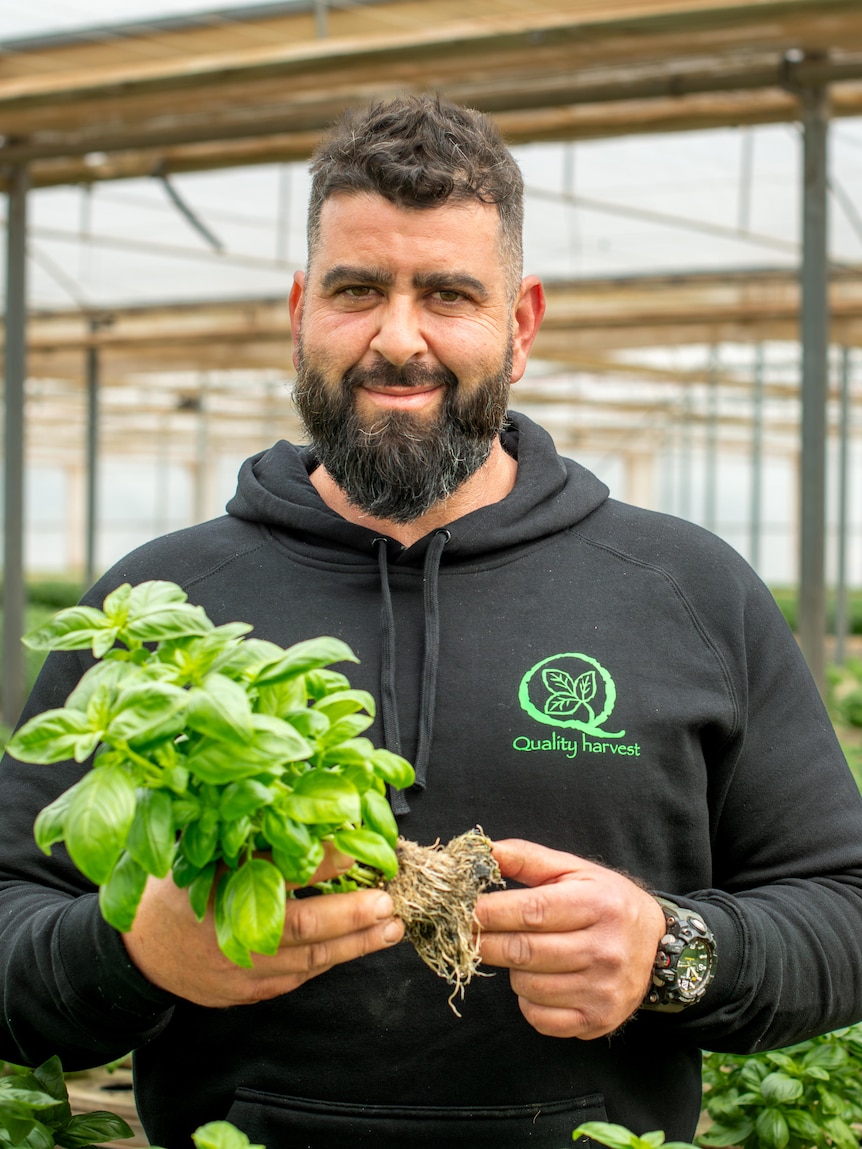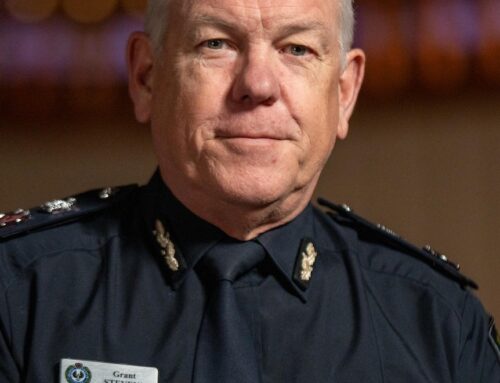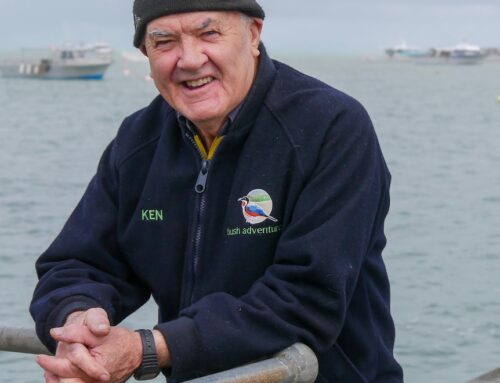Damien Manno has to own one of the best smelling farms in the country. Unfortunately, he doesn’t get to enjoy that part of his job.
“I can’t smell it anymore,” Mr Manno said.
“You’re in here all the time, you get immune to that smell, so that’s probably one bad thing about farming basil.”
Mr Manno, who runs Quality Harvest in Kudla, north of Adelaide, is one of the largest hydroponic basil farmers in South Australia.
Production there has grown from 1,000 to almost 30,000 bunches a week over the past decade.
Mr Mann was named young grower of the year at last year’s Hort Connections national awards.
It was a big achievement for someone who grew up on a vineyard, studied to become a winemaker and then switched to growing herbs in a greenhouse.
“There was always something bringing me back to growing and growing something green,” he said.
“I didn’t really know what I was doing.”
“I actually bought a book [about hydroponic food production] and read the book, you know, probably a hundred times.”
Bringing traditions, business together
His choice to go big on basil was motivated by his family’s traditions and a gap in the market when he noticed a lot of herbs were coming in from interstate.
“Coming from a southern Italian background, my nonna used it a lot, my mum used it a lot, so it was just a familiar plant,” he said.
Mr Manno initially grew just basil and Asian greens, but he has since diversified into other familiar herbs such as coriander, mint and chives.
He has more recently taken diversification to the next level, teaming up with former AFL players Marlon and Daniel Motlop to grow native herbs and succulents, under the brand Native Kitchen.
While he may have brought commercial growing experience to the partnership, it has been a two-way education.
“Before we grew the natives I had no idea on certain aspects of Indigenous life and what things meant, and to have that and appreciate that now, it’s probably something you can’t buy,” he said.
Farming native Australian plants
Native plants are traditionally found outside, but to supply them all year round, the growers decided to move them into the more controlled environment Mr Manno had established.
Marlon Motlop said they had adjusted well and while they were not as potent as they were in the wild, they still packed a punch.
“Just by standing here the aromas hit you in the face,” he said.
“Australian natives have a way of just taking off wherever they go, they act like weeds in some aspects.”
The facility that was dominated by Mediterranean herbs now also has a distinctly Australian flavour, growing everything from native basil, river mint and sea parsley to succulents such as karkalla and warrigal greens.
“We did start out saying we can replace conventional basil and use Australian native products, but over the journey, we’ve learnt a lot and now we’re seeing this as more of a value-added product,” Mr Motlop said.
Mr Motlop, who is also an in-demand musician, said it was a change of pace from his other more high profile job.
“It just provides an outlet for me to just be present, switch off from the craziness of touring and the music life and then just look after my beautiful natives,” he said.
There has also been a lot of learning, not just how to commercially grow natives, but also how to protect the cultural significance of the plants and the communities they come from.
Indigenous leader in agriculture
Mr Motlop last year became the first Indigenous person to be awarded an agricultural scholarship from Nuffield Australia, which has allowed him to travel the world looking at the intellectual property rights of crops.
“Aboriginal and Torres Strait Islander Australia needs to be acknowledged and respected in the right way in terms of commercialising Australian native produce and the intellectual property of each product needs to be protected,” he said.
“You look at the macadamia nut, for instance, that’s an Australian native product that has been commercialised by the Americans.
“So there’s a lost opportunity for Aboriginal and Torres Strait Islander communities.”
He said lemon myrtle was another example.
“One of the biggest suppliers in the world is not even based in Australia,” he said.
He said a passion for commerce and culture had helped bring two very different families together and along the way broadened their minds and palettes.
“We kind of blend the two cultures together and you can see that in the way we cook and the way we eat together as well,” Mr Motlop said.
“We’d love to see other people understand native produce, but also how that works with conventional produce here in Australia.”
Watch this story on ABC TV’s Landline at 12:30pm on Sunday or on iview.
Stories from farms and country towns across Australia, delivered each Friday.




